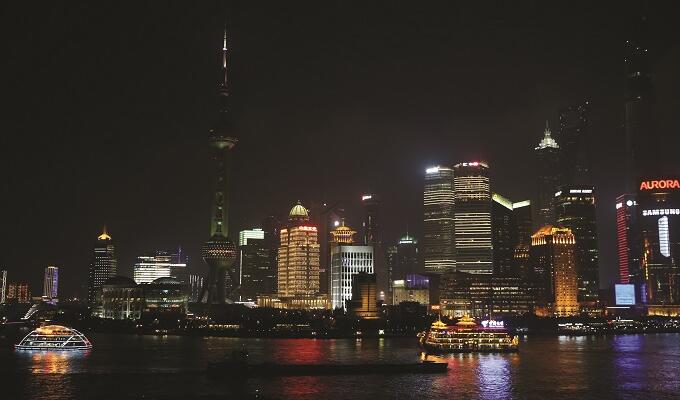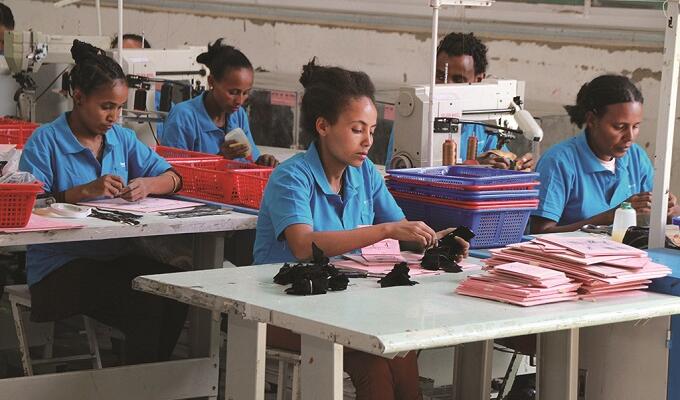

Why trade matters for better lives (en)
Openness to trade and investment is a key ingredient for generating economic growth and ultimately leads to better lives for men and women across the globe. We have seen it happen in many countries the past decades, for example in China and South Korea. Today Ethiopia is among the countries going through a similar experience.
The country’s first textile mill was established nearly 80 years ago but, until recently, it has not been able to develop a viable textile export industry. However, with a growing workforce and the need for new jobs, the Government of Ethiopia has taken major steps to promote investment in the sector. A range of trade agreements now offer trade benefits and Ethiopian enterprises have better access to regional and global markets as a result.
Today Ethiopia is rapidly becoming an attractive location for textile manufacturing as a result of competitive labour costs, government incentives, and low energy costs. Companies such as Swedish retailer Hennes & Mauritz (H&M), British supermarket firm Tesco and American companies such as Gap, Belk and Wal-Mart are now sourcing textile products from the country. In fact, H&M, the International Labour Organization and the Swedish International Development Cooperation Agency have launched an industrial relations project aiming to improve the development of a socially sustainable textile and garment industry in Ethiopia. It is the outspoken goal of the Ethiopian government to be a ‘leading country in light manufacturing in Africa, which will lay the foundation for heavy and high tech industries by 2025’.
Increased trade plays a big part in the development of any country. China has lifted more than 600 million people out of poverty since it opened up in the late 1970s and surged ahead to become the world’s largest exporter. Young South Koreans are 390 times richer than their grandparents were, the emergence of global companies such as automaker Hyundai and electronics giant Samsung explaining some of the growth.
There is still much progress to be made. Global incomes could be increased by US$ 400 billion annually simply by improving trade rules. High trade costs prevent a large number of developing countries from fully exploiting opportunities the global market offers.
MARGINALIZEDLandlocked, remote and small economies are marginalized by costs that tend to reflect geography, not capacity. Producers in lowincome countries are often competitive at the farm and factory gate but are usually priced out of the international market. More often than not this is a result of cumbersome border procedures, poor infrastructure, a lack of finance and complex standards.
It was in response to these issues that the Organisation for Economic Co-operation and Development (OECD) and the World Trade Organization (WTO) launched the Aid for Trade initiative 10 years ago. Its impact of has been largely positive: firms have been enabled to develop new products, increase exports and cut costs.
Aid for Trade has helped create jobs, improve workers’ skills and working conditions, and led to improved environmental performance. A 2013 OECD study showed that US$ 1 invested in Aid for Trade generates US$ 8 worth of trade for all developing countries and US$ 20 for low income countries. The same study showed that female workers are empowered by trade liberalization, which often leads to more work places for women. These are impressive returns on investment.
Development aid is also an important source of funding for least developed countries. However, economic growth alone will not be enough to eradicate poverty even if all African countries grew Chinese-style at 10% for the next 15 years. To end poverty we need specific policies targeting the most vulnerable countries and people.
The total amount of development aid reached a new high in 2015. Despite continuing economic woes in many OECD countries and the refugee crisis in Europe, total aid reached US$ 131.6 billion. Additional development aid from China, Arab states and Latin American countries helped make that achievement possible
FOREIGN DIRECT INVESTMENTAt the same time foreign direct investment is five times greater than development assistance. However, even more private investments are needed for clean energy, manufacturing plants and greener agriculture. Some US$ 20 billion is expected to be invested around the world every year over the next 15 years. No doubt, billions of dollars spent on development assistance each year will have a greater impact if coupled with private investments in green development and trade in poor countries.
Almost a million Africans join the labour market every month and only private investment can provide the jobs needed. Development assistance can be used to reduce risk and mobilize private investments. Guarantees, soft loans and equity investments funded by development aid can help attract investors to Ethiopia’s growing textile industry.
The beginning of a new railway connecting landlocked Burundi, Rwanda, South Sudan and Uganda with the Kenyan port town of Mombasa is a great example. The Chinese-funded project will cut transport costs in half, increase regional trade and improve access to port and global trade for four landlocked East African countries.
The same factors that contribute to higher trade costs also inhibit regional integration. In just five years, exports from Colombia, Mexico and the Central American countries increased by 50% as a result of regional efforts to improve infrastructure and regulatory frameworks.
Trade initiatives are most effective when developing countries work together and donors support their efforts. Cutting costs through trade facilitation and Aid for Trade will contribute to better and faster development.
Building capacity for trade is an ongoing process. We are the first generation in human history with the knowledge and resources to end poverty and promote sustainable development. We need to make sure that aid money is invested in developing countries in a sustainable way. But the best thing we can do for people and the planet is to identify and copy policies that actually improve lives.



